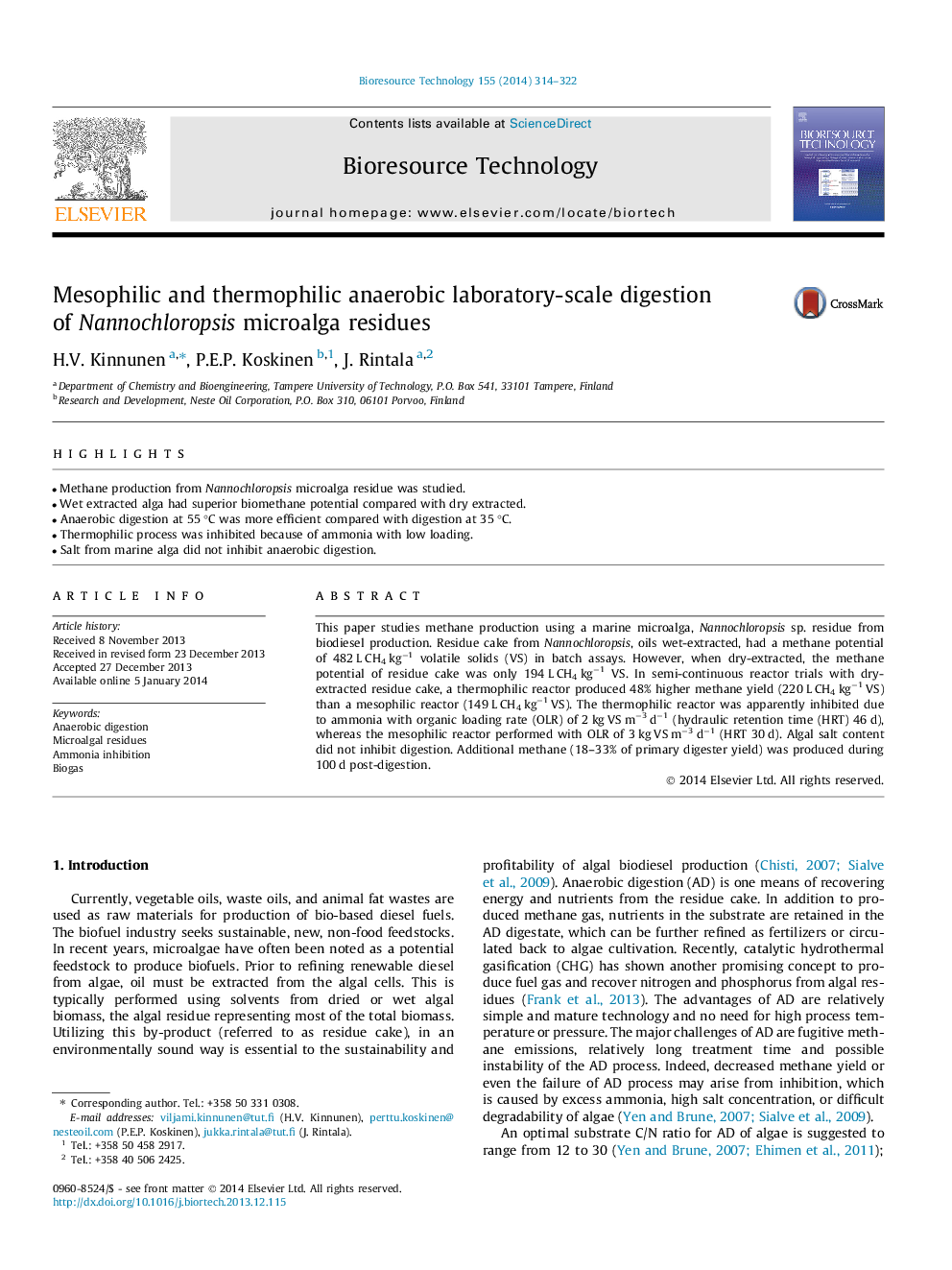| کد مقاله | کد نشریه | سال انتشار | مقاله انگلیسی | نسخه تمام متن |
|---|---|---|---|---|
| 680965 | 1459988 | 2014 | 9 صفحه PDF | دانلود رایگان |
• Methane production from Nannochloropsis microalga residue was studied.
• Wet extracted alga had superior biomethane potential compared with dry extracted.
• Anaerobic digestion at 55 °C was more efficient compared with digestion at 35 °C.
• Thermophilic process was inhibited because of ammonia with low loading.
• Salt from marine alga did not inhibit anaerobic digestion.
This paper studies methane production using a marine microalga, Nannochloropsis sp. residue from biodiesel production. Residue cake from Nannochloropsis, oils wet-extracted, had a methane potential of 482 L CH4 kg−1 volatile solids (VS) in batch assays. However, when dry-extracted, the methane potential of residue cake was only 194 L CH4 kg−1 VS. In semi-continuous reactor trials with dry-extracted residue cake, a thermophilic reactor produced 48% higher methane yield (220 L CH4 kg−1 VS) than a mesophilic reactor (149 L CH4 kg−1 VS). The thermophilic reactor was apparently inhibited due to ammonia with organic loading rate (OLR) of 2 kg VS m−3 d−1 (hydraulic retention time (HRT) 46 d), whereas the mesophilic reactor performed with OLR of 3 kg VS m−3 d−1 (HRT 30 d). Algal salt content did not inhibit digestion. Additional methane (18–33% of primary digester yield) was produced during 100 d post-digestion.
Journal: Bioresource Technology - Volume 155, March 2014, Pages 314–322
